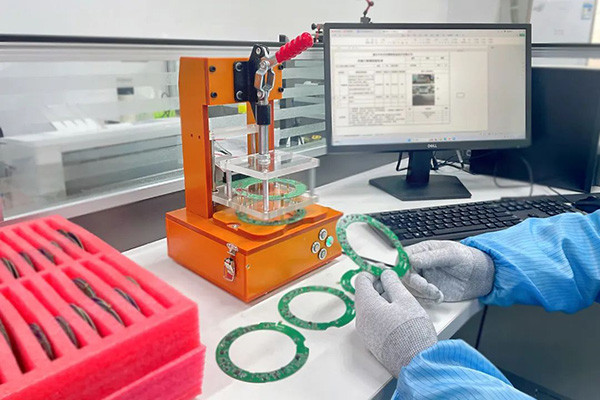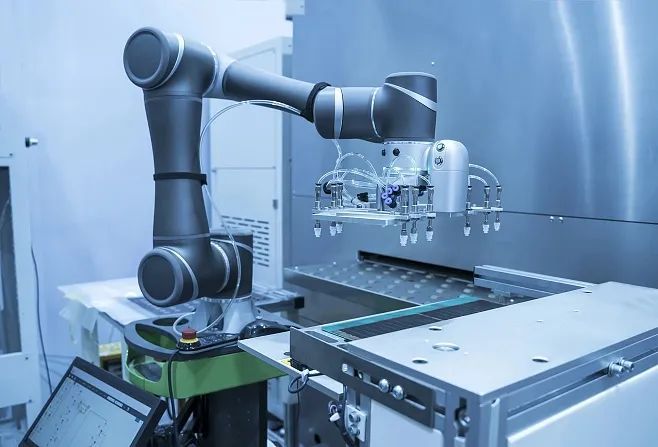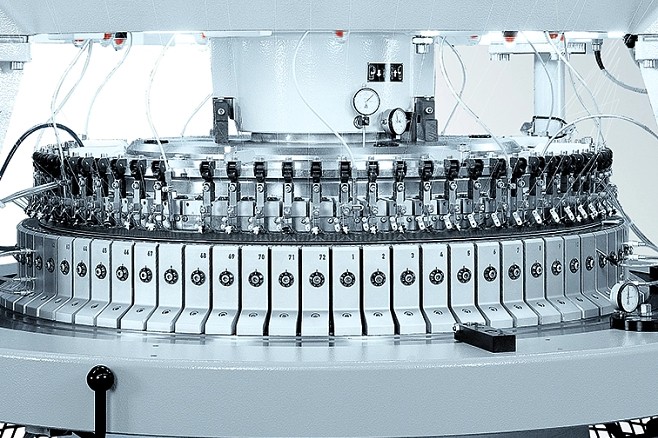Introduction to Time Grating Encoder
A Time Grating Encoder is an advanced sensor that converts mechanical motion into a digital signal, allowing machines to track position, velocity, or angular rotation with high precision. These encoders are essential in applications where accuracy and durability are critical, such as industrial automation, robotics, and aerospace.
The development of time grating encoders has revolutionized the field of motion control by offering a solution that is both more precise and reliable than traditional optical and magnetic encoders. Their ability to operate in harsh environments while maintaining high performance makes them indispensable in many industries.

Definition of Time Grating Encoder
A Time Grating Encoder is a device that uses time-based measurement principles to detect changes in position or motion. Unlike optical or magnetic encoders that rely on the physical interaction of light or magnetic fields, time grating encoders measure time intervals and convert this information into an output signal.
Importance in Modern Automation
In the era of industrial automation encoder, where automation and smart manufacturing are transforming industries, time grating encoders provide the level of precision necessary to control machinery and equipment at unprecedented accuracy. Whether in automotive production, robotics, or aerospace, these encoders offer stability, reliability, and high resolution in motion control systems.
How Time-grating Encoder Technology Works
Understanding how a Time Grating Encoder functions is key to appreciating its technological superiority over other encoder types.

Basic Operating Principles
At the core, a Time Grating Encoder measures intervals of time between reference signals as the object moves. These time intervals correspond to shifts in position, allowing the encoder to produce highly accurate data on the motion and location of an object. This method eliminates many of the noise and interference issues faced by traditional encoders, making it particularly useful in applications that demand extreme precision.
Components of a Time Grating Encoder
A typical Time Grating Encoder consists of:
- Time Grating Scale: A finely etched scale that provides reference points for the time intervals.
- Sensing Element: The sensor detects the movement relative to the grating scale and measures time intervals.
Signal Processor: Converts the measured time intervals into a digital signal, providing real-time feedback on position and velocity.
The Evolution of Encoder Technology
Time Grating Encoders represent the latest evolution in encoder technology, providing numerous advantages over earlier types such as optical and magnetic encoders.
From Optical to Magnetic Encoders
Historically, optical encoders were the standard for high-resolution applications, using light beams to track position. However, they often struggled in dusty or oily environments. Magnetic encoders, which use magnetic fields, offer better durability but can be prone to interference from external magnetic sources.
Introduction of Time Grating Encoders
Time Grating Encoders were developed to overcome the limitations of both optical and magnetic encoders. By relying on time-based measurement rather than light or magnetism, they offer higher accuracy and greater resistance to environmental factors such as temperature changes, dust, and vibrations.
Advantages of Time Grating Encoders Over Traditional Encoders
Higher Resolution and Accuracy
Time Grating Encoders provide sub-micron level resolution, making them ideal for applications that require extremely precise measurements. Their time-based sensing approach minimizes errors commonly introduced by environmental conditions.

Noise Resistance and Stability
One of the standout features of Time Grating Encoders is their inherent resistance to noise. Since they do not rely on optical or magnetic properties, they are unaffected by contaminants like dust, grease, or electromagnetic interference. This makes them suitable for environments where traditional encoders would fail or produce inaccurate readings.
Key of Time-grating Encoder Application
The versatility and reliability of Time Grating Encoders make them suitable for a wide range of industries:
Manufacturing
In manufacturing, time grating encoders are used in high-precision machinery such as CNC machines, ensuring accurate position feedback for cutting, milling, and drilling operations.
Robotics
Robotic systems benefit from the real-time motion control capabilities of Time Grating Encoders, allowing for smooth and precise operation, particularly in automated assembly lines.
Aerospace and Defense
In aerospace, time grating encoders provide critical feedback in systems where precision is paramount, such as in aircraft navigation and guided missile systems.
Energy and Power Generation
Time Grating Encoders are also used in turbine control systems and other energy generation equipment, where they help optimize performance and reduce mechanical wear.
High-precision Time-grating Encoder in Industrial Automation
Role in Factory Automation
In factory settings, Time Grating Encoders ensure precise positioning in automated production lines, helping reduce waste and increase throughput.
Application in CNC Machines
With their ability to provide precise real-time feedback, Time Grating Encoders are widely used in CNC (Computer Numerical Control) machinery, ensuring that each movement is executed exactly as programmed.
Motion Control Systems
For motion control systems, particularly in automation and robotics, Time Grating Encoders offer the speed and accuracy required for complex, high-precision tasks.
How Time Grating Encoder Improve Productivity in Manufacturing
Precision in Machinery Operation
The high precision offered by Time Grating Encoders allows machinery to operate with minimal deviations, resulting in fewer defects and higher product quality.

Reducing Downtime and Maintenance
By using durable materials and providing high resistance to environmental interference, Time Grating Encoders reduce the frequency of maintenance and downtime, improving overall equipment efficiency.
Technical Time-grating Encoder Features
Resolution and Accuracy
Time Grating Encoders can achieve resolutions up to nanometers in some models, making them one of the most accurate motion sensing technologies available today.
Durability and Lifespan
Thanks to their robust design, these encoders are built to last in industrial settings, offering extended lifespan and reliable performance even in harsh conditions.
Installation and Maintenance of Time Grating Encoders
Proper Installation Techniques
Correct installation of Time Grating Encoders is critical for optimal performance. The encoder must be aligned precisely with the machinery and calibrated to ensure accurate readings.
Common Maintenance Practices
While Time Grating Encoders require less maintenance than traditional encoders, regular checks for mechanical wear and sensor calibration are still necessary to maintain accuracy over time.
How to Choose the Right Industrial Automation Encoder for Your Application
Key Factors to Consider
- Resolution: Consider the resolution requirements of your application.
- Environmental Conditions: Ensure the encoder can operate in the specific conditions of your environment, such as temperature and dust levels.
Signal Type: Different encoders offer various output signals (e.g., digital, analog) depending on the application.
Comparing with Other Encoder Types
Time Grating Encoders provide superior performance in terms of accuracy, environmental resistance, and durability compared to optical and magnetic encoders.
Time Grating Encoder vs. Optical and Magnetic Encoders
Detailed Comparison of Technologies
While optical encoders offer high resolution, they are susceptible to dust and dirt contamination. Magnetic encoders provide better durability but often lack the precision needed for high-end applications. Time Grating Encoders offer a balance, delivering both high resolution and environmental resistance.
Performance in Harsh Environments
In harsh industrial settings, Time Grating Encoders outperform both optical and magnetic encoders due to their time-based measurement system that is immune to contaminants and interference.
Challenges in Implementing Time Grating Encoders
Common Technical Hurdles
Some challenges in implementing Time Grating Encoders include proper alignment during installation and ensuring compatibility with existing control systems.

Overcoming Integration Issues
To successfully integrate Time Grating Encoders, it is essential to use compatible software and ensure that the encoder’s output signals match the input requirements of the control system.
Future of Time Grating Encoder Technology
Ongoing Research and Development
Research is ongoing to further increase the resolution and speed of Time Grating Encoders, making them even more suitable for emerging fields like quantum computing and autonomous vehicles.
New Trends in Automation
As automation continues to advance, Time Grating Encoders will play an even more significant role in smart manufacturing, robotics, and AI-driven production lines.
Industrial Automation Encoder Selection
Compliance with International Standards
Time Grating Encoders must comply with international standards such as ISO 9001 and IEC standards to ensure their accuracy and reliability in industrial applications.
Certification Requirements
Most encoders, including Time Grating Encoders, require certification from regulatory bodies to verify their compliance with industry standards, particularly in safety-critical applications like aerospace and medical devices.
FAQs
What is a Time Grating Encoder?
A Time Grating Encoder is a precision sensor that measures time intervals between reference signals to track motion and position.
How does a Time Grating Encoder work?
It operates by detecting time intervals corresponding to position changes, converting this into a digital signal for real-time feedback.
What are the main applications of Time Grating Encoders?
Key applications include manufacturing, robotics, aerospace, and energy systems.
How does a Time Grating Encoder compare with an Optical Encoder?
Time Grating Encoders offer higher resistance to environmental factors like dust and vibration, providing better performance in harsh conditions.
What is the future of Time Grating Encoder technology?
The future lies in increasing accuracy and integrating with advanced automation technologies such as AI-driven control systems.
Are Time Grating Encoders suitable for harsh environments?
Yes, they are highly resistant to dust, temperature changes, and electromagnetic interference, making them ideal for rugged industrial environments.
INQUIRY NOW
